
Official Edgar Rice Burroughs Tribute and Weekly Webzine Site Since 1996 ~ Over 15,000 Web Pages in Archive Presents Volume 2159 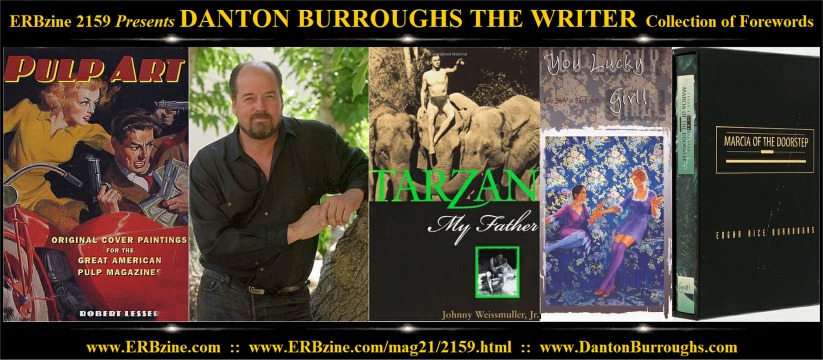
A Selection of Book Forewords by the Grandson of Edgar Rice Burroughs |

Official Edgar Rice Burroughs Tribute and Weekly Webzine Site Since 1996 ~ Over 15,000 Web Pages in Archive Presents Volume 2159 
A Selection of Book Forewords by the Grandson of Edgar Rice Burroughs |
![]()
IMPORTANT PULP PAINTINGS
IN THE BURROUGHS COLLECTION
by Danton Burroughs
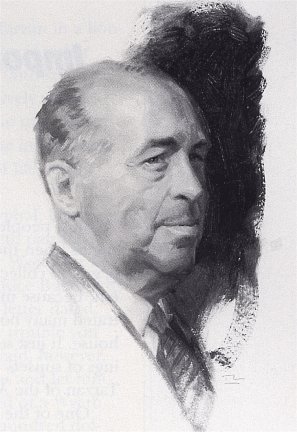
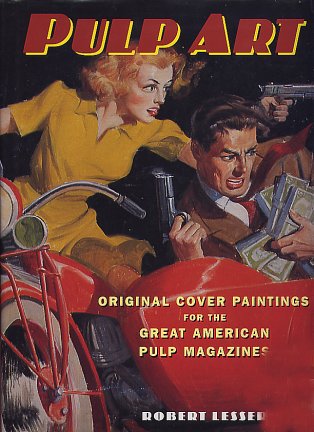
To most people pulp art is something they either bought from the news-stands when they were kids or else discovered when they were older and began to collect the exciting old magazines themselves. For me it was different. Because my grandfather was Edgar Rice Burroughs, and my father illustrated many books, that was the kind of artwork I commonly saw around the house. It just seemed natural to me. Whereas other homes might have paintings of sunsets or scenes of bucolic rural life, I saw framed paintings of Tarzan of the Apes. |
![]()
MARCIA OF THE DOORSTEP
Edgar Rice Burroughs and
the Romantic Mystery:
An Introduction
by
Danton Burroughs
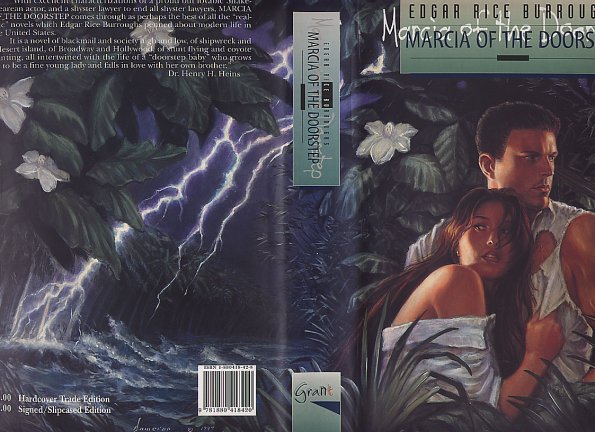
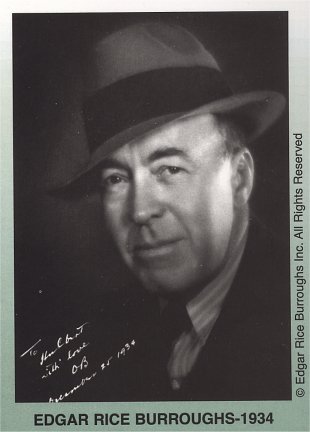
I'm certain that my grandfather, Edgar Rice Burroughs, never dreamed that when he penned TARZAN OF THE APES he would be, forever after, doomed to write sequel after sequel about the exploits of the immortal apeman. His editors, both magazine and book, continually clamored for Tarzan stories -- as did his fans. By the time he had written THE SON OF TARZAN, Ed was convinced that he had written everything he had to say about Tarzan. Little did he realize that he would write twenty-two more stories about the Lord of the Jungle. 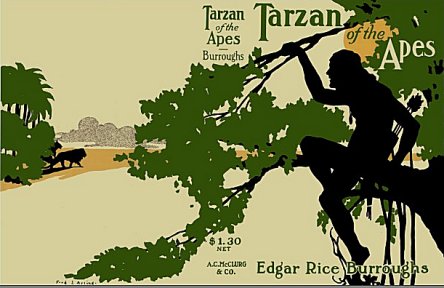 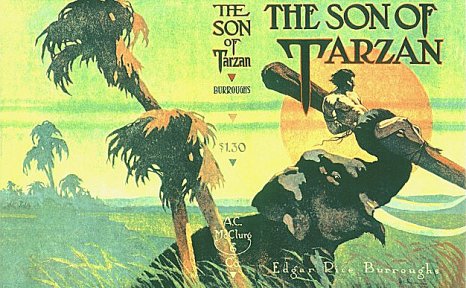 Ed desired to write other kinds of stories: tales of romance and mystery. He did not wish to be categorized as merely "that guy who wrote Tarzan." But every time he attempted to write something else besides Tarzan of the Apes; John Carter of Mars; David Innes of Pellucidar; or Carson of Venus; his editors complained that they wanted another Tarzan story. Sometimes the only way that he could sell something else was to promise the editors another story about the inimitable Tarzan. 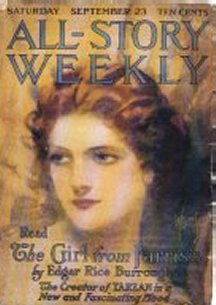 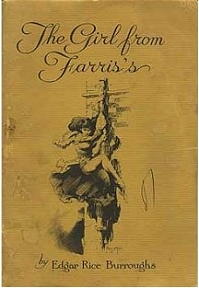 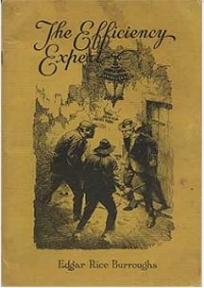 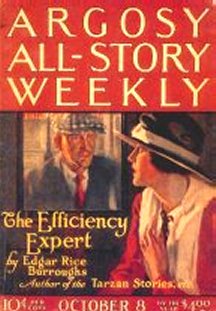 It would be another five years before Ed tried his hand at yet another romantic mystery, THE EFFICIENCY EXPERT, written in 1919. Beginning with this story, and including his future romantic mysteries, Ed began to imbue his characters with autobiographical characteristics. |
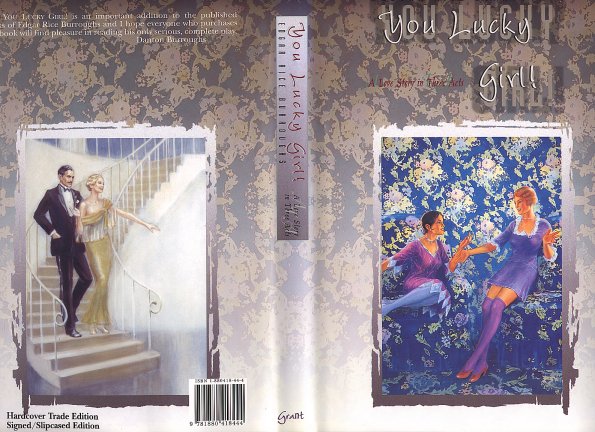
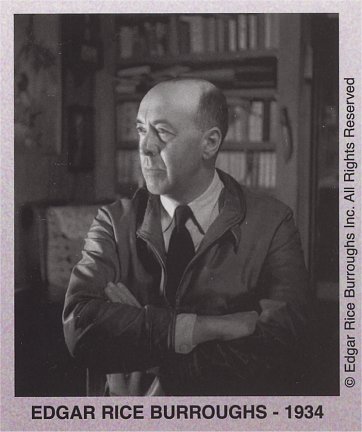
|
![]()
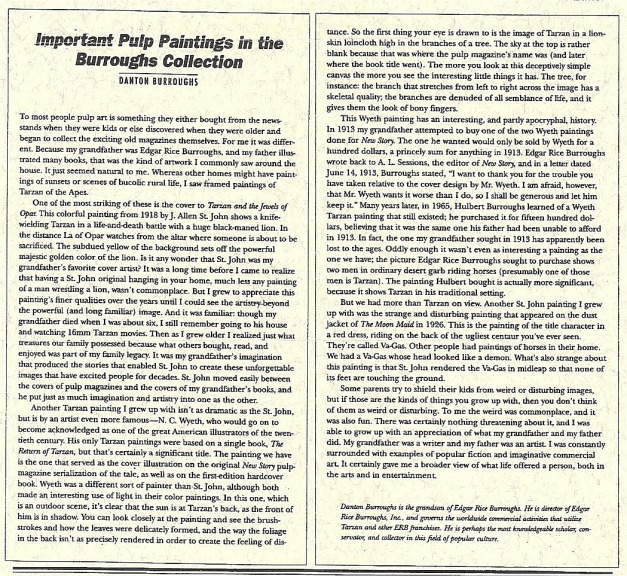
Click for larger image
From McWhorter's Gridley Wave
No. 184
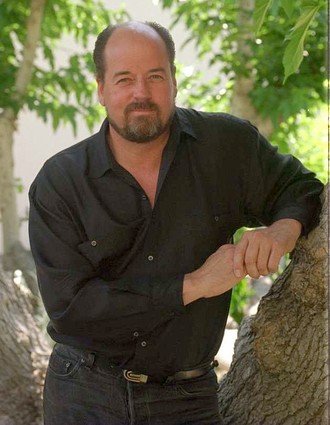
Danton Burroughs
www.dantonburroughs.com
Danton Burroughs was the
grandson of Edgar Rice Burroughs.
He was director of Edgar
Rice Burroughs, Inc., and governed
the worldwide commercial
activities that utilize Tarzan and other ERB franchises.
He was perhaps the most knowledgeable
scholar, conservator, and collector in this field of popular culture.
Before his passing, Danton
shared a wealth of ERB-related material with me
from his vast ERB Family
Tarzana Archives.
![]()
![]()

![]()
BILL
HILLMAN
Visit our thousands
of other sites at:
BILL
and SUE-ON HILLMAN ECLECTIC STUDIO
ERB Text, ERB
Images and Tarzan® are ©Edgar Rice Burroughs, Inc.- All Rights
Reserved.
All other Original
Work ©1996-2008/2021 by Bill Hillman and/or Contributing Authors/Owners
No part of this
web site may be reproduced without permission from the respective owners.